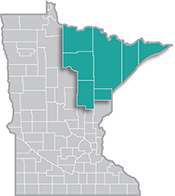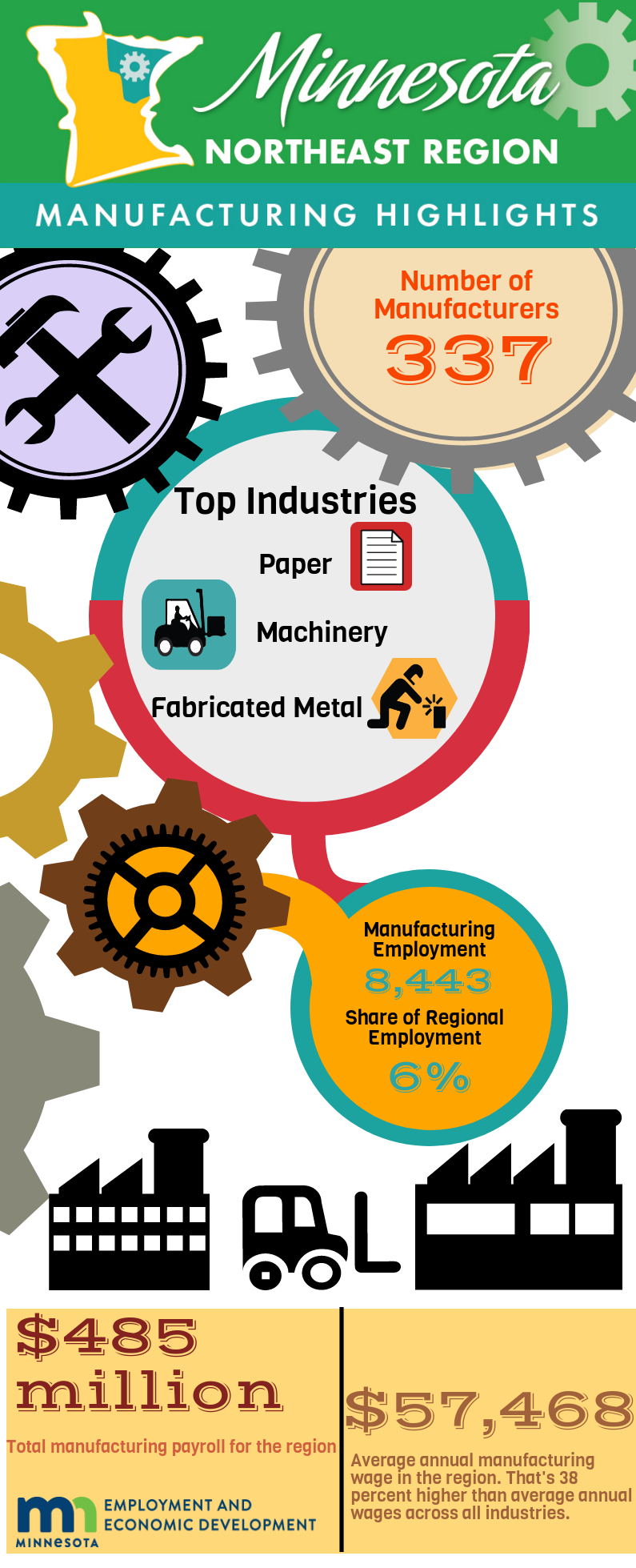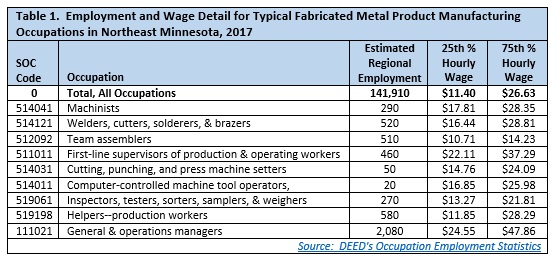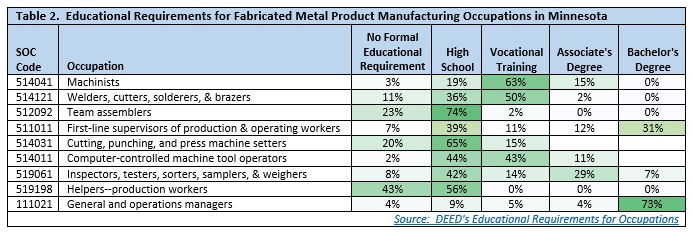 Home to the state's second-largest metro, the Northeast Region has a strong industrial sector, tied largely to the area's abundant natural resources.
Home to the state's second-largest metro, the Northeast Region has a strong industrial sector, tied largely to the area's abundant natural resources.
Most of the manufacturing base centers on mining and forest products industries. More than half of the sector's employment is in paper and machinery manufacturing.
Want the freshest data delivered by email? Subscribe to our regional newsletters.
10/2/2017 12:04:56 PM
Erik White
 Manufacturing is the sixth largest industry in Northeast Minnesota, behind health care and social assistance, retail trade, accommodation and food services, educational services and public administration. With 8,443 jobs at 337 establishments, manufacturing accounts for just 6 percent of total employment in the region. That's much less concentrated than the state as a whole, where 11.3 percent of total jobs are in manufacturing.
Manufacturing is the sixth largest industry in Northeast Minnesota, behind health care and social assistance, retail trade, accommodation and food services, educational services and public administration. With 8,443 jobs at 337 establishments, manufacturing accounts for just 6 percent of total employment in the region. That's much less concentrated than the state as a whole, where 11.3 percent of total jobs are in manufacturing.
From 2011 to 2016, manufacturers in Northeast Minnesota lost just over 500 jobs, a decrease of 5.7 percent. Northeast Minnesota was one of only two planning regions in the state that lost manufacturing jobs since 2011, while the other four saw manufacturing job growth. Overall, the state of Minnesota gained about 16,600 manufacturing jobs during this time frame, a 5.5 percent increase.
Paper manufacturing is the largest sector with 2,001 jobs, but the region also has significant strength in machinery manufacturing (1,080 jobs) and fabricated metal product manufacturing (753 jobs). Northeast Minnesota also had just over 700 jobs apiece in transportation equipment manufacturing and wood product manufacturing, and just under 600 jobs in nonmetallic mineral product manufacturing.
Manufacturing is one of the highest paying industries in the region. Total payroll in manufacturing reached $485 million in 2016. That accounted for 8.2 percent of total wages in Northeast Minnesota. Average annual wages in manufacturing in the region were $57,468 in 2016. That was nearly 38 percent higher than average annual wages across all industries. Manufacturing wages in the region increased 7.2 percent from 2011 to 2016, compared to a 10.0 percent wage increase across all industries.
What the region may lack in quantity, it makes up in quality. The average annual wage for manufacturing jobs in the region is $57,468, almost $15,700 more per year than the average annual wage across all industries in the region.
Despite the smaller concentration of manufacturing in the region and its downward trend of employment, the fabricated metal product manufacturing subsector is an important industry to the regional economy.
In 2016, there were 753 jobs at 50 different businesses classified as fabricated metal product manufacturers in Northeast Minnesota. That made up 8.9 percent of all manufacturing jobs in the Arrowhead region, with only paper manufacturing and machinery manufacturing employing a bigger share of manufacturing jobs. However, since 2011, the fabricated metal product manufacturing has lost 117 jobs, a 13.4 percent decrease that doubles the downward trend of the manufacturing industry in the region.
Despite the losses, the occupations within the fabricated metal product manufacturing sector provide higher wages and lower educational requirements than do many other jobs, and there are still ample opportunities in the region. Using the Bureau of Labor Statistic's Industry-Occupation Matrix, the most common occupations within fabricated metal product manufacturing can be determined. Combined with DEED's Occupation Employment Statistics data program, the employment and wage ranges can be determined (see Table 1).

The educational requirements for most fabricated metal product manufacturing-related occupations are typically high school or vocational training. General and Operations Managers are an exception to this, with 73 percent of openings in Minnesota requiring a bachelor's degree, according to DEED's Educational Requirements for Occupations (see Table 2).

With vocational training playing an instrumental role for placement into many of these career fields, Northeast Minnesota and its higher education system has programs in place to fill the future pipeline for these jobs. Hibbing Community College, Itasca Community College, and Mesabi Range College all provide industrial technology programs, while Mesabi and Lake Superior College both provide welding programs. The Applied Learning Institute is another resource in the region that has the ability to prepare people for future careers in the manufacturing industry.
Despite the smaller concentration and recent contraction of jobs in manufacturing, there still is great opportunity within this industry in the region.
Contact Erik White at erik.white@state.mn.us or 218-302-8413.